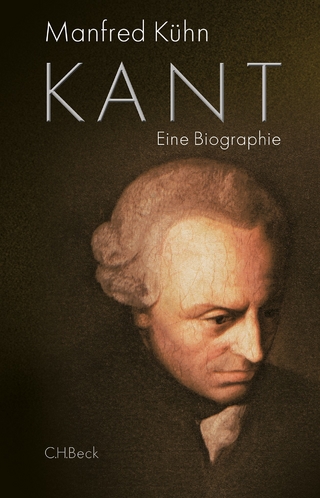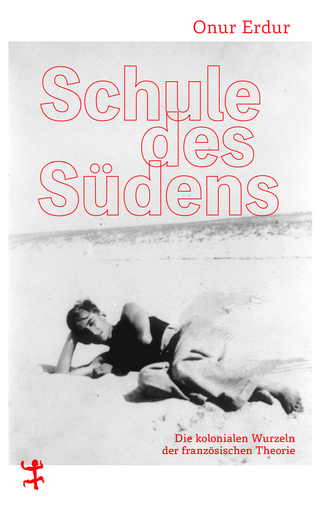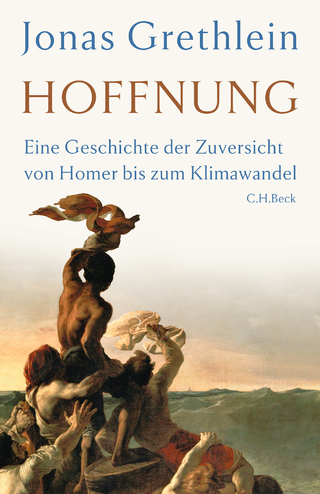
A History of Hegelianism in Golden Age Denmark, Tome II
Brill (Verlag)
978-90-04-53483-4 (ISBN)
This is the second volume in a three-volume work dedicated to exploring the influence of G.W.F. Hegel’s philosophical thinking in Golden Age Denmark. The work demonstrates that the largely overlooked tradition of Danish Hegelianism played a profound and indeed constitutive role in many spheres of the Golden Age culture.
This second tome treats the most intensive period in the history of the Danish Hegel reception, namely, the years from 1837 to 1841. The main figure in this period is the theologian Hans Martensen who made Hegel’s philosophy a sensation among the students at the University of Copenhagen in the late 1830s. This period also includes the publication of Johan Ludvig Heiberg’s Hegelian journal, Perseus, and Frederik Christian Sibbern’s monumental review of it, which represented the most extensive treatment of Hegel’s philosophy in the Danish language at the time. During this period Hegel’s philosophy flourished in unlikely genres such as drama and lyric poetry. During these years Hegelianism enjoyed an unprecedented success in Denmark until it gradually began to be perceived as a dangerous trend.
Jon Stewart is a Research Fellow at the Institute of Philosophy of the Slovak Academy of Sciences. He has worked for many years in the field of nineteenth-century Continental philosophy with a specialization in Hegel and Kierkegaard.
Preface to the Second Edition
Acknowledgments
List of Illustrations
Abbreviations
Introduction: The Martensen Period of Danish Hegelianism
I The Break with the Initial Period
II Theses of the Present Tome
1 Martensen’s Breakthrough: 1837
I Martensen’s Review of Heiberg’s Introductory Lecture to the Logic Course
II Møller’s Article on Immortality
III Heiberg’s Conflict with the Maanedsskrift for Litteratur
IV Heiberg’s First Volume of Perseus
A Heiberg’s “To the Readers”
B Heiberg’s Review of Rothe
C Martensen’s Essay on Faust
V The First Review of Perseus
VI Martensen’s On the Autonomy of Human Self-Consciousness
VII Møller’s “Ontology or the System of Categories”
VIII Martensen’s Lectures, “Speculative Dogmatics” in Winter Semester 1837–38
2 Sibbern’s Critical Response to Heiberg’s Hegelianism: 1838
I Heiberg’s Speculative Drama, Fata Morgana
II Martensen’s Review of Fata Morgana
III Kierkegaard’s The Conflict between the Old and the New Soap-Cellars
IV Sibbern’s Review of the First Volume of Perseus
A Sibbern’s Introduction
B Article I: Sibbern’s Critique of Hegel’s Account of the Beginning of Philosophy
C Article ii: Sibbern’s Critique of Hegel’s Treatment of the Laws of Logic
D Article III: Sibbern’s Critique of Hegel’s Triads and Doctrine of the Trinity
E Article IV: Sibbern’s Critique of Heiberg’s Assessment of Danish Philosophy
F The Rest of the Review
V Martensen’s Lectures on Speculative Dogmatics in Summer Semester 1838
VI Wiborg’s Pseudo-Hegelian Aesthetics
VII Grundtvig’s Criticism of Hegel in His Lectures, The Memory of Man
VIII The Second Volume of Heiberg’s Perseus
A Heiberg’s “The System of Logic”
B Carl Weis’ “On the Historical Development of the State”
C Heiberg’s “On Painting in its Relation to the Other Fine Arts”
D The End of Heiberg’s Perseus
IX Kierkegaard’s From the Papers of One Still Living
X A Review of the Second Issue of Heiberg’s Perseus
XI Martensen’s Lectures, “The History of Modern Philosophy from Kant to Hegel”
XII Martensen’s Lectures, “Speculative Dogmatics” in Winter Semester 1838–39
3 The Debate about Mediation and the Law of Excluded Middle: 1839
I J.A. Bornemann’s Review of Martensen’s Dissertation
II Mynster’s “Rationalism, Supernaturalism”
III Heiberg’s Response to Mynster
IV Martensen’s “Rationalism, Supernaturalism and the principium exclusi medii”
V Schiødte’s “A few Words Concerning the Three so-called Laws of Logic”
VI The Academic Reading Association
VII Berg’s Outlines of a Philosophical Propaedeutic or Epistemology
VIII Monrad’s Flying Political Papers
IX F.C. Bornemann’s Introductory Lecture on Jurisprudence
4 The Attack on Martensen and His Students’ Hegel Fever: 1840
I The Controversy Surrounding the Purported Arrogance of Martensen and His Students
A The Attack on Martensen in Kjøbenhavnsposten
B Martensen’s Response: “Philosophical Modesty in Kjøbenhavnsposten”
C The Critic’s Response: “Philosophical Self-Importance in Fædrelandet”
D The Article “An Attacker of Philosophy”
E Martensen’s “Statement”
F “The Final Contribution” from Martensen’s Critic
G The Rest of the Debate
II Andersen’s Criticism of Kierkegaard as a Hegelian in A Comedy in the Open Air
III Nielsen’s Treatise on the Speculative Method’s Treatment of Sacred History
IV Martensen’s Meister Eckhart
V Hagen’s Review of Martensen’s Meister Eckhart
VI Adler’s Dissertation, The Isolated Subjectivity
VII Adler’s Review of Heiberg’s “The System of Logic”
VIII Madvig’s A Glance at Constitutions of Antiquity
IX A Polemic between Sibbern and Heiberg about Hegel’s Political Philosophy
X The Role of Hegel in the Overviews of Swedish Philosophical Literature in Fædrelandet
XI The Controversy Surrounding Clausen’s Hermeneutics of the New Testament
A Clausen’s Criticism of Hegel’s Philosophy
B Adler’s Response: Professor Clausen’s Judgment of the Hegelian Philosophy
C Hagen’s Review of Clausen’s Hermeneutics of the New Testament
XII Molbech’s Philosophy of History
5 Kierkegaard’s Hegelian Master’s Thesis: 1841
I Heiberg’s New Poems
A “Divine Service”: A Hegelian Philosophy of Religion
B “A Soul after Death”: A Hegelian Satire
C “Protestantism in Nature”
II Martensen’s Review of Heiberg’s New Poems
III Tryde’s Review of New Poems
IV The Pseudo-Grundtvig’s “Open Letter against the German Heretics”
V A Hegelian Complaint about the Journal for Foreign Theological Literature
VI The Anonymous Article “Mynster and the Hegelians”
VII Martensen’s Outline to a System of Moral Philosophy
VIII Kierkegaard’s Hegelian Philosophy of History: The Concept of Irony
A Kierkegaard’s Methodological Remarks: The Introduction
B Kierkegaard’s Account of the Dialectical Method in “The View Made Possible”
C Hegel’s Account of Socrates’ Daimon in “The Actualization of the View”
D Hegel’s Account of Socrates vis-à-vis the Sophists and the Other Greek Schools in “The View Made Necessary”
E Hegel’s Account of Socrates as the Founder of Morality in “Hegel’s View of Socrates”
F Hegel in the Introduction to Part Two
G Kierkegaard’s Critique of Hegel’s Account of Socratic Irony in “The World-Historical Validity of Irony”
H Kierkegaard’s Use of Hegel’s Criticism of Romantic Irony in “Irony after Fichte”
I Kierkegaard’s Solution: Controlled Irony
J The Hegelian Nature of the Text
IX Kattrup’s Translations
X Parts One and Two of Nielsen’s Speculative Logic
XI Kierkegaard’s Stay in Berlin
A Schelling’s Lectures
B Marheineke’s Lectures
C Werder’s Lectures
D Kierkegaard’s Notes on Hegel’s Aesthetics
XII Brøchner and the Examination Scandal
XIII The Transition to the Next Period of the Hegel Reception in Denmark
Bibliography
I Secondary Sources on the Danish Hegel Reception
II Primary Texts and Sources Used
III Secondary Literature and Material Used
Index
| Erscheinungsdatum | 05.04.2024 |
|---|---|
| Reihe/Serie | Danish Golden Age Studies ; 14 |
| Verlagsort | Leiden |
| Sprache | englisch |
| Maße | 155 x 235 mm |
| Gewicht | 1569 g |
| Themenwelt | Geisteswissenschaften ► Philosophie ► Geschichte der Philosophie |
| Geisteswissenschaften ► Philosophie ► Philosophie der Neuzeit | |
| Geisteswissenschaften ► Religion / Theologie | |
| Sozialwissenschaften | |
| ISBN-10 | 90-04-53483-0 / 9004534830 |
| ISBN-13 | 978-90-04-53483-4 / 9789004534834 |
| Zustand | Neuware |
| Haben Sie eine Frage zum Produkt? |
aus dem Bereich


